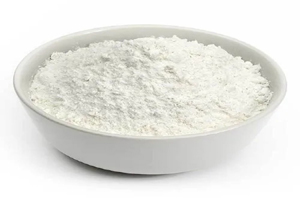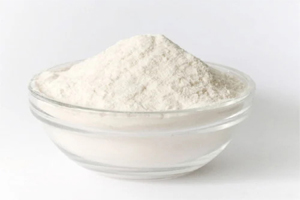Corn (Maize) And Potato Starch
CORN MAIZE STARCH
Diverse uses of Starch make it a very versatile product. Maize or Corn Starch is a typical cereal starch with distinctly low protein and ash contents. Its carbohydrate content of high purity makes it useful in several industries.
Starch occurs in nature in many ways. Maize contains about 66% of starch, which can be separated from other ingredients by various processes such as steeping, grinding, purifying and drying. The physio-chemical and functional properties of starch exhibit a wide variation with slight change in the production parameters. One of the important properties is the viscosity of starch slurry. Normally, starch has near neutral PH. With an increase in the PH, viscosity of starch tends to increase, thus making it possible to have diverse uses. This is commonly known as High Viscosity Starch and is used in the textile industry for sizing.
Maize Starch exhibits all the properties of native starch with some special features such as non-foaming & non-thinning characteristics of boiling solution. Hence maize starch has a marginal effect on the efficiency in weaving and paper industry. Where high viscosity starch is used, it imparts higher tensile strength to the fibre and thus improves the sizing. The remarkable advantage over tapioca starch is short cooking time of less than an hour and uniform smoothness of paste. The foaming is low even at high pH. The starch deeply penetrates into the fibres making it an ideal choice for sizing and finishing.
Combined with resins, starch produces a permanent finish. Good binding capacity results in its use as a good filler and binder in tablets. It is also a vital additive for most of the adhesives due to these properties. In slurry, it provides body to food products. It also helps in retaining the viscosity of foods. Besides this, it is excellent filler in cosmetics by virtue of its smoothness in dry form.
Applications :
Pharmaceutical Industry
Maize Starch is used in Pharmaceutical Industry as a dusting media for various type of coating as well as binder & filler for capsules & tables. It is widely accepted in the areas of Dry granulation techniques where active ingredient are hygroscopic and is difficult to dry after wet binding, Maize Starch has proved to be as a efficient dry – binder.
Modified Starches
Modified starch is an additive prepared by treating starch or starch granules, causing the starch to be partially degraded. Modified starch is used as a thickening agent, stabilizer, or an emulsifier. Apart from food products, modified starch also find use in paper manufacturing, Pharmaceuticals, Textiles and various other industrial applications. Starches are modified to increase their stability against excessive heart, acid, and freezing to change their texture or to lengthen or shorten gelatinization time.
Thin Boiling Starch
It has low and uniform viscosity, which does not change much with temperature unlike native starches, which show wide variation in viscosity. The keeping qualities of the native starch also show a marked variation, i.e. considerable degradation occurs on boiling.
Thin Boiling Starch's non-congealing characteristic, shorter boiling time, transparency of paste and lower viscosity ensure easy working, compared to thick boiling starches. Unlike gum and glues which require soaking, Thin Boiling Starch is readily dispersed in water and can be boiled into a smooth paste without any pretreatment.
Spray Starch
Modified starch is an additive prepared by treating starch or starch granules, causing the starch to be partially degraded. Modified starch is used as a thickening agent, stabilizer, or an emulsifier. Apart from food products, modified starch also find use in paper manufacturing, Pharmaceuticals, Textiles and various other industrial applications. Starches are modified to increase their stability against excessive heart, acid, and freezing to change their texture or to lengthen or shorten gelatinization time.
SPRAY Starch is specially Modified Maize Starch developed for spraying application. It is made for special functional Paper industries in presence of well experienced and experts to give specific desired property, its wet end application on wire part intensifies following:
■ To increase ply-bond and stiffness in board.
■ To increase bursting strength.
■ Exceptional retention of fine/fillers.
Cationic Starch
Cationic starches represent a unique class of high performance starch derivatives which have gained commercial acceptance because of their affinity towards negatively charged substrate such as cellulose, aqueous suspensions of minerals and slimes and biologically active macromolecules. They have already found extensive use in the paper manufacture in which they function as internal binders and retention aids for various fillers and emulsions and are added to the paper furnish before the sheet is formed. They are effective for improving such physical properties of paper as bursting and tensile strength, elongation, fold endurance, and pick resistance. Usually 0.5% to 1% addition of cooked cationic starch, gives the same improvement in the paper as does 1.5% to 2% addition of corn starch. Other benefits of the cationic starches are improved drainage on the wire, better sheet formation and enhancement of the sizing efficiency of an alum rosin size. Cationic starches also improve the retention of fillers such as titanium dioxide, clay, calcium carbonate which are frequently incorporated in the furnish to improve the opacity of high grade printing papers, fine writing papers, light weight papers such as bread wraps, glassine, etc. With increasing filler retention, the sheet loses strength because inert fillers reduce the number of sites for fiber to fiber bonding. Because cationic starch acts both to improve strength properties and filler retention. Its use gives high strength properties at higher level of filler retention.
Oxidised Starch Dextrins
As dextrins do not easily react with chemicals, they are specially suitable for application in the textile field. In textiles printing, they are used as thickeners. Free of grit and other impurities, which usually accompany lower grades of starch, they ensure that the copper rolls (used in printing) do not suffer from abrasion. In sizing, they are used with starch for increased adhesiveness. In finishing, they give desired feel and handle to the fabric.
Tapioca Starch
Tapioca Starch is isolated from the tuberous roots of the manioc plant, which grows mainly in equatorial climates. Depending on the region of growth, plants may be known as mandioca, yucca, cassava or tapioca. Tapioca is the seventh largest production of staple food in the world. Among the starchy staples, Tapioca gives a carbohydrate production which is about 40% higher than rice and 25% more than maize with the result that Tapioca is the cheapest source of calories for both human nutrition and animal feeding.
There are many varieties of Tapioca, but they fall into two main categories named bitter (Manioc palmate) and sweet (Manioc aspic). For industrial purposes mostly bitter variety is used because of higher starch content. Sweet tapioca is used for food because of taste and its dough forming ability.
Starch makes up the nutritive reserves of Tapioca plant. During the growing season solar energy is transported as sugar solution down to the tubers and sugar is converted to starch in the form of tiny granules occupying the most of the cell interior. The conversion takes places by means of enzymes. Tapioca Starch is a food grade product refined from tapioca roots. It is typically used as a native water binding and texturizing agent.
Tapioca Starch, in cooked dispersion, is quite clear and bland in flavor. The texture is long and somewhat stringy. Upon cooling, it may set to soft gel. Under prolonged heating, and under acidic conditions, the starch will lose most of its thickening ability.
Tapioca Starch is recommended for use in extruded snacks for improved expansion. It can also be used in custard-type pie filling to reduce surface cracking. Additionally, it may be used as a thickener in “all natural" foods that are not subject to rigorous processing conditions. Tapioca Starch, which is very bland in flavor, is used in processed baby foods as a bodying agent.
Food :-
Tapioca starch is widely used in making foods, baby food, bread, instant noodle,noodle,seasoning.
Sweetener :-
Glucose, lactose and fructose made from tapioca starch are used as substitutes for sucrose in beverages, jams and canned fruits.
Medicine :-
Tapioca starch is used to mix with active pharmaceutical materials to make capsules and tablets.
Texttile :-
Tapioca starch is used in 3 stages of textile processing:
• The sizing stage to make yarn smooth
• The printing stage to make the colors even and the finishing stage to make the colors even
• The finishing stage to make the fabric durable and shiny.
Animal Food :-
Tapioca is one of the ingredients for animal compounding.
Paper :-
Tapioca starch is used in the stage of paper pressing and the stage of flattening and polishing to improve the quality of the paper. It is also used to thicken some kinds of paper, such as calendar paper and package paper.
Glue :-
Tapioca starch is a very important raw material in making glues.
Bio-Degradable Products :-
Tapioca starch can be used as a substitute to plastic to mix with bio-degradable polymer to produce a packaging material.
Sorbitol: As a hexahydric alcohol, Sorbitol is a member of the polyhydric alcohol family, the lowest of which are ethylene glycol and glycerol. The close chemical relationship between Sorbitol and the lower alcohols (like glycol and glycerol) is responsible for the similarity in their general physical properties and applications in industrial technology.
In general, hexitols and their derivatives particularly Sorbitol, are used in diverse industries viz. pharmaceuticals, cosmetics, toothpastes, cigarettes, foods, textiles, adhesives, confectionery, printing ink, etc. One of the major uses of Sorbitol is as a humectant and conditioning agent. Many products under day-to-day atmospheric changes require the addition of a humectant to assist them to retain their freshness, softness and flexibility and to maintain ideal manufacturing conditions.
To summarise, the principal advantages which Sorbitol exhibits over other polyols are
• Sorbitol GIVES UP water very slowly to dry atmosphere.
• Sorbitol TAKES UP water very slowly from a humid atmosphere.
Confectionery :
In candy manufacture, Sorbitol is used together with sugar to increase shelf life. The function of Sorbitol is to retard the solidification of sugar often associated with staleness in candy. It also helps to improve softness, taste and texture. In butter creams additional benefit is enhanced flavour. Sorbitol may be used in diabetic chocolates. Sorbitol is used as humectant and softener in shredded coconut, its decided advantage over invert sugar being that the darkening of the product does not occur. Sorbitol 70% added to peanut butter has been shown to reduce dryness and crumbliness and improve spreadability.
Pharmaceuticals :
Sorbitol finds use as a bodying agent in pharmaceutical syrups and elixirs. The use of Sorbitol in cough syrups reduces the tendency of the bottle caps to stick due to the crystallisation of the sugar present. Sorbitol is a good humectants and plasticiser and these properties make it useful in emulsion ointments, non-fat soluble ointments and gelatine capsules. Ointments, creams and pastes will show satisfactory spreading capacity with sorbitol as adjuvant.
Aqueous Sorbitol Solutions are not subjected to fermentative decomposition, and that is why Sorbitol finds increasing use in the preparation of dental formulations for buckle cavity.
Toothpastes:
Sorbitol effectively replaces glycerine and sugar in toothpastes imparting the required degree of plasticity and sweetness, humectant and plasticising properties of Sorbitol.
Skin Cream And Cream Foundation:
Sorbitol replaces glycerine as humectant and conditioning agent and helps to reduce the greasiness as well as the particle size of the disperse.
Emulsion :
Sorbitol retards the loss of water by evaporation from oil in water emulsion and is more effective than glycerine of the same concentration when this is less then 10%.
Foods :
Sorbitol imparts to frozen desserts, body and texture, as well as some sweetness. Sorbitol is used.
Pregel Starch Powder
Pregelatinized starch is a modified starch which easily takes up water and swells at room temperature. It is used in instant desserts, allowing the food to thicken when cold water is added. Other applications include cold prepared foods such as dairy products, beverages, including reduced sugar varieties, confectionery, cold mixes such as fruit and cream fillings, glazes, frostings and icing for bakery products and snacks, instant foods, soups, sauces, dressings and as a binder and texturizer in meat products. There are also industrial and pharmaceutical applications for pregelatinized starches.
Application
■ Pharma: As instant binder and disintegration agent in tablet manufacturing.
■ Food Industries: As a thickener and moisture retention.
■ Coal Industry: Binder for briquettes
■ Oil Well Drilling: To control water
■ Laundry: Cold water soluble starch
■ Textile: Finishing and sizing
■ Paper: As a wet end additive
■ Foundry: As a binder
■ Mosquito Oils: As a binder
High Maltose Syrup
High Maltose syrup (HMS) is a specially prepared acid-enzyme converted corn syrup which contains maltose as its major carbohydrate constituent. This high maltose syrup improves flavor, body and texture at high sucrose replacement levels while imparting resistance to color formation, moisture absorption, and crystallization in finished products such as hard candies. It products finished products which have exceptional stability, clarity, and brilliance.
High Maltose syrup is from refined starch by biochemical technology (Double Enzymatic process) The concentration is more than 50% of maltose. It has the characteristics of soft sweet, fine taste, stable at high temperature and acid condition, so it is reasonable to keep good condition so it is reasonable to keep good quality and shelf life.
It is better to use it in candy production with tenacity and transparency instead of granulated sugar. Recrystallization is seldom occurred, which improves the quality and reduces the cost. It is widely used as a thickening and modelling agent. It has advantages of anti crystallinity, lower freezing points. So, it can improve the taste, feeling and quality and reduce production cost it is widely used as thickener and plasticisation in cold drinks industry. In cakes, bread, baking food, it can keep the effect of starch and extend the shelf life. High quality and delicious taste are kept in preserved fruits, jams, tinned fruits and cream. This yields a product that is high in maltose (a disaccharide) and low in monosaccharides like dextrose.
ACETYLATED DISTARCH ADIPATE
FlaMas- TS-CWS- E1422
FlaMas-TS-CWS-E1422 is an Acetylated Distarch adiphate- Pregelatinized tapioca starch which is a Vegan, Plant-based, Gluten free and Non-GMO based product that is pre-cooked, soluble in cold water. It can be used as a Thickener, Binder, Emulsifier and Stabilizing agent in Fruit Sauce, Ketchup, infant’s foods, Yogurt and Baking Industry.
It is highly bio-degradable and causes no harm to the Environment.
FlaMas-TS-CWS-E1422 is Pre-cooked and soluble in cold water. FlaMas-TS-CWS-E1422 is a White powder that adds no colour to application and blends well with other ingredients. It has a bland taste and so will not mask flavours or aromas.
FlaMas-TS-CWS-E1422 contains no fat, protein, fiber, vitamins, or other minerals.
FlaMas- MS-CWS- E1422
FlaMas-MS-CWS-E1422 is Acetylated Distarch adipate- Pregelatinized maize starch, which is a Vegan, Plant-based and Non -GMO based product that is pre-cooked, soluble in cold water. It can be used as a Thickener, Binder, Emulsifier and Stabilizing agent in Sauce, Ketchup, infants’ foods, Yogurt and Baking Industry.
It is highly bio-degradable and causes no harm to the Environment.
FlaMas-MS-CWS-E1422 is Pre-cooked and soluble in cold water.
FlaMas-MS-CWS-E1422 is a White powder that adds no color to
application and blends well with other ingredients. It has a bland taste and so will not mask flavours or aromas.
FlaMas-MS-CWS-E1422 contains no fat, protein, fiber, vitamins, or other minerals.
POTATO STARCH
Potato starch is made from tubers of Potato. It is a white to off white free flowing powder that can be used as a Thickener, Binder and Stabilizer in Soup, Canned foods, Noodles and Cake Industries. Potato starch is Gluten-Free, Plant based and Vegan product.
APPLICATIONS
In Baking industry:
Potato starch can be used as a replacement for egg to retain moisture in baked goods such as cakes and keep them fresh and improve their appearance. It can also be used to reduce the fat and calories in the products.
In snack Industries:
It can be used to enhance the fiber and reduce calories in snacks. Potato starch helps in Enhancing snack texture for excellent expansion and crispiness.
In Instant foods:
Potato starch is an excellent go to ingredient for creating noodles with elastic texture and quick hydration. It is used as a thickener in Canned foods, juices and Soups to increase thickness, stability and to fill viscosity.
In Meat industry:
Potato starch can be used as a Replacement for phosphates, retaining juiciness and firm textures in meats, and replacing fats in ground meats. It also has a good water and fat binding capacity and improves the texture of meat products.
In Cheese Industry:
Potato starch acts as an Anti-caking agent that can be used for preventing lump formation during storage of shredded Mozzarella cheese and to improve its storage stability.
For added advantages:
Potato starch can be used as an alternative for Gelatine to reduce the total cost and to obtain Kosher and Halal Certifications. It can used in all products that is to be claimed as Gluten- Free, Grain-Free and Vegan Products.
FEATURES AND BENEFITS:
It is highly bio-degradable and causes no harm to the Environment.
Potato starch is a White powder that adds no colour to application and blends well with other ingredients. It has a bland taste and so will not mask flavours or aromas.
Potato starch contains no fat, protein, fibre, vitamins, or other minerals.



